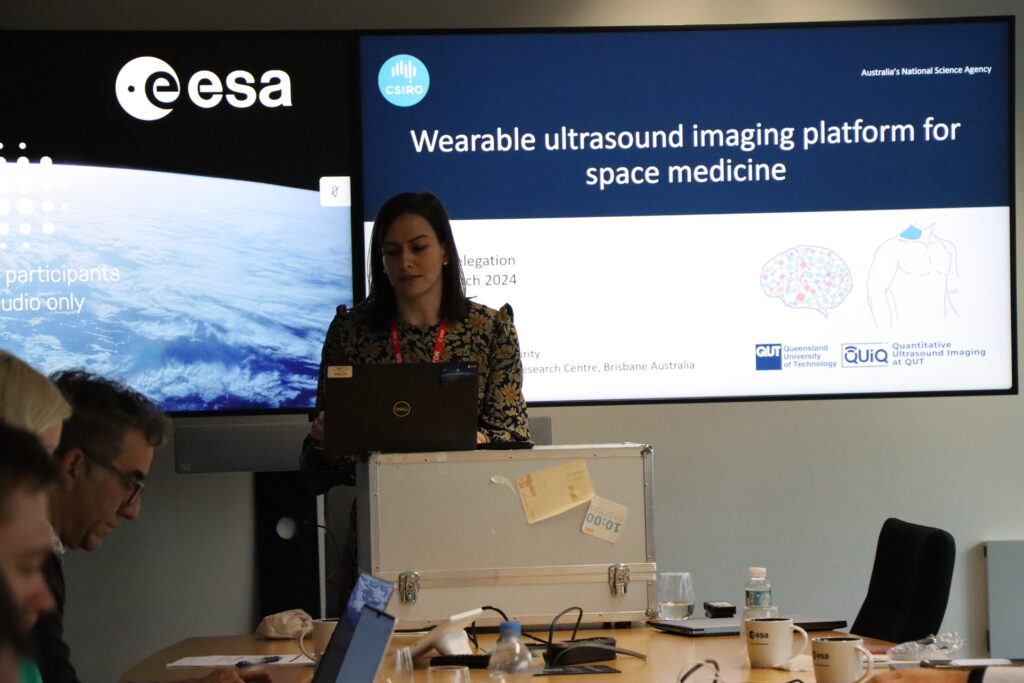AEHRC’s Maria Antico is reaching for the stars
Maria Antico, a CERC postdoctoral fellow at the AEHRC, headed to the European Astronaut Centre in Cologne, Germany as a member of an Australian Space Agency delegation.
Maria and colleagues in the AEHRC’s medical image analysis team are working with the Queensland University of Technology to develop wearable ultrasound technology. This sci-fi-sounding project and Maria’s journey to Germany are supported by the CSIRO Space Technology Future Science Platform.
Why is wearable ultrasound technology relevant for space travel? That’s what Maria was presenting on at the European Astronaut Centre, so let’s hear it from her:
‘Ultrasound imaging is used in space to diagnose medical issues. The astronauts don’t have a lot of training in doing ultrasounds, so they have to talk to people back on the ground in real-time,’ Maria said.
‘The problem is that in future missions, like missions to Mars, there will be a communication delay between the astronauts and people on the ground.’
Our researchers think that their wearable ultrasound technology could be applied to this problem. Ideally, the technology would enable astronauts to conduct ultrasounds and analyse the images without relying on real-time expert advice.
‘We embed ultrasound technology into a flexible patch that’s placed on the area of interest. It can be scanned by someone with no anatomical or medical imaging knowledge,’ Maria said.
Artificial intelligence is then used to analyse the data and interpret the image for the user – the whole process can be conducted without any specialised training.
The feedback on the technology and its applications were overwhelmingly positive.
‘The specialists I spoke to before and during the trip were very interested in this application of our technology. They also think it could be very useful for continuous monitoring of medical issues,’ Maria said.
Meeting space medicine experts and astronauts was a highlight of the trip for Maria.
‘It was really inspiring to meet Katherine Bennell-Pegg, an Australian astronaut candidate. Her training regime is very impressive,’ she said.
Maria and the team are excited about the future applications of their out of this world technology.

The Australian e-Health Research Centre (AEHRC) is CSIRO's digital health research program and a joint venture between CSIRO and the Queensland Government. The AEHRC works with state and federal health agencies, clinical research groups and health businesses around Australia.
